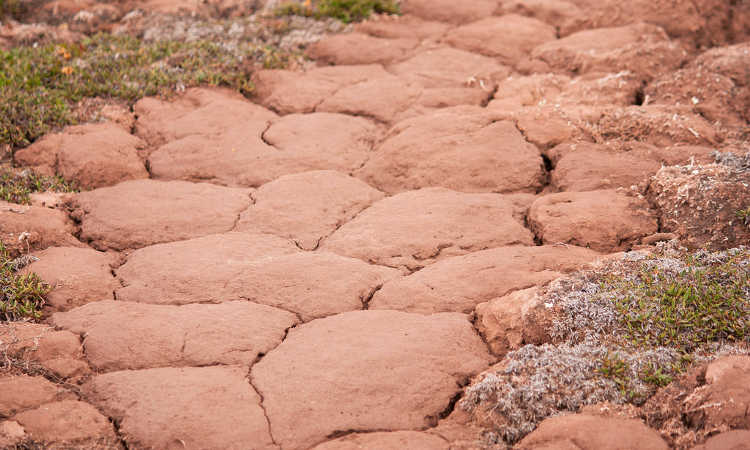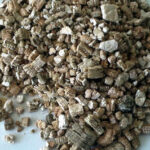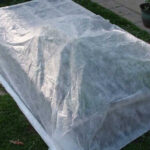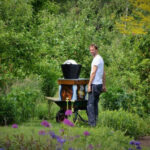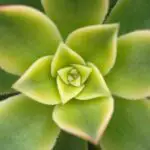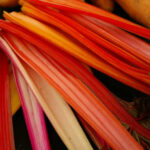When I was growing up my Mom always complained to my Dad about her garden and flower beds. She would say things like “Nothing grows in this red dirt!”, or “I’m not planting anything this year, it never grows!”
I always thought Mom just didn’t have a green thumb.
Fast forward about twenty years, and now I understand her struggle.
Digging in my flower beds and garden used to be like playing in a big mud pie that was left out in the sun to dry. The flowers and vegetable plants I planted always showed signs of being over-watered. Because yes, I have clay soil.
I’ve figured out a few ways that have improved the quality of my garden and flower bed soil. These tips have made my efforts in the garden more fruitful and less back-breaking.
Let’s start with the first step: determining if you actually have clay soil. Then I’ll show you what to do to fix it.
Listen to this post on the Epic Gardening Podcast
Subscribe to the Epic Gardening Podcast on iTunes
Discovering The Signs Of Clay Soil
For me, the largest problem with my heavy clay soil was the compacting of the dirt. It was heavy and wasn’t easy to till or dig into.
In addition to that, I also have waterlogged soil every spring after the snow melts. Compaction leads to poor drainage, and that leads to clumps in my tiller. Plants have a hard time developing good roots, as well.
First, you need to determine if clay is the problem. This simple test will help you determine the type of soil you are dealing with.
Pick up a handful of soil. Squeeze it in the palm of your hand. If it forms a sausage shape and stays together when you open your hand its clay-based soil. Sandier soils will crumble more readily if you poke at the soil blob.
Also, check out your soil’s color. Many are rich in iron oxide, which gives the soil a reddish or rusty tone. This is not universally true, but may offer a helpful hint. Red clay soils tend to be fairly common around the world.
Finally, there’s the “clay snake” method. Make that sausage shape mentioned above, then roll it between your fingertips to make it into a thin, long snake. Soil that stubbornly clings to its snake shape over 2 inches of length is likely clay.
How To Amend Clay Soil
Here are some tips that I’ve discovered that helped improve my clay soil. These also make my gardening more enjoyable and less backbreaking.
Check The Soil Moisture First
There are two ways of working with clay soil: when it’s really wet, or when it’s really dry.
Anything in between will cause the soil to stick to your shovel and become agonizing to deal with. It clumps and clings, and is just impossible. So it’s important to only dig when the soil is either very muddy and extremely soft, or when it’s fully dried out.
Even then, be careful. If you’re working with the soil while it’s wet, you’re going to create hard clods of dirt once it dries out. The only way to avoid this is to amend the soil heavily while it’s still muddy, so you can break up all the clods and evenly blend the amendment in.
Don’t Overwork The Soil
Related to the last section is to avoid overworking your soil. If you go out and turn your wet soil without amendment, all you’ll end up with is a bunch of heavy, dry clods. Anyone who’s ever dealt with heavy clay blobs knows that they’re hard to break apart later!
Along the same line, try to avoid over-compacting your soil as well. Don’t walk on areas you’re improving. Clay compacts itself naturally if you, the kids, or your pets walk on it. All you’re doing is making the problem worse.
Add Quality Amendments
No matter what time of year it is, adding aged compost can be beneficial. Compost is filled with plant matter that will help break up the clay particulate. It’s also just really good for your plants in general and can help improve their growth significantly.
Biochar is another option. This light and porous charcoal can help improve drainage in clay soil while it also adds more organic matter to break up clods. It’s gained popularity in farming, too, and is starting to replace gypsum in a lot of areas.
Consider opting for perlite if you’re still having drainage issues. Perlite helps hold open pathways for water to filter through, and also keeps your soil aerated, which is good for breaking down plant matter like compost.
Looking for how to improve clay soil for lawns? Consider using greensand. Greensand is made of a mineral called glauconite, and it improves clay soil while adding some great micronutrients and a good potassium kick for your grass. It works well in gardens, too!
When all else fails, consider working in a commercial soil conditioner blend. There are many options available on the market, and working that in over time will gradually improve the upper structure of your soil.
Consider Soil Builder Mulches
Cover your worked areas with compost, bark, mulch, grass clippings, fall leaves, or even manure. I used shavings from my barn. Try to coat the worked areas 2-3″ deep with this organic matter.
When you add products like this over your soil, the materials begin to decompose and break down. Over time, they will work themselves into your soil, helping to keep the soil broken up and workable in subsequent years.
Plant A Cover Crop
When you’ve plucked the last head of cabbage in the fall, plant a cover crop. I like using timothy hay and then working that into the soil as organic compost in the spring. I’ve also tried other cover crops like clover, alfalfa, and buckwheat.
Even with these tips, it isn’t going to be a quick turnaround. Sorry, but it may take several years before you notice a difference in your garden soil.
Should I Use Gypsum?
Often, the immediate recommendation of garden centers is to add gypsum to your soil. Don’t jump straight to doing that, though. Make sure it’s right for your garden.
The effects of gypsum in soil to break apart the clay granules are short-term. In fact, it often only lasts for a few months time. And it has other effects that are much more long-term and problematic.
Adding gypsum to your soil can cause leaching of mineral and nutrient levels. Leaching of aluminum or sodium can be good as it detoxifies the soil, but leaching of iron or manganese can cause nutrient deficiencies in your plants. It may also cause other mineral deficiencies.
In addition, gypsum may make it difficult for beneficial mycorrhizae in your soil to do their jobs. Those beneficial growths often help your plants take up nutrition more easily, and you don’t want to slow the growth of your plants!
A Washington State University study thoroughly examined this topic. The consensus was that while there are applications for commercial farmland, or for extremely hard-compacted soils or sodium-polluted soils, it just isn’t very effective in most home gardens.
Stuck With Clay? How to Garden Anyways
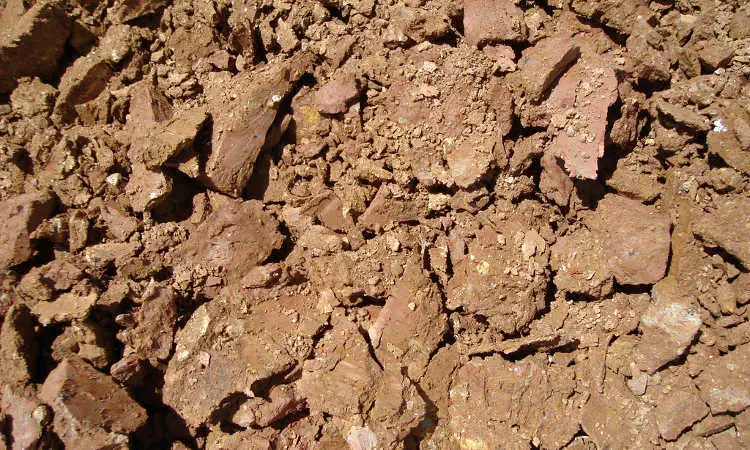
So if you have clay soil, how do you get around it? Well, let’s break that down a bit further.
Rise Up
Build raised beds on top of a smaller area. I used top-of-the-line soil and grew my tomatoes in raised beds.
This made it easier for me to work in the garden, as the beds put the plants at a much more workable height. It also kept the dogs and kids from compacting the soil that I was working so hard to change.
There are many different types of raised beds, from planter-style ones to much more elaborate garden styles. You’ll make your garden look better and be able to grow even without doing the necessary soil amendments on your clay.
Warm And Protect Your Soil
In the spring the soil tends to become waterlogged due to the amount of snow we receive. This makes starting vegetable plants in the garden difficult.
My solution was adding window greenhouse boxes made from recycled window panes. This type of small greenhouse or cold frame can easily be built in few hours or less.
A cold frame or greenhouse-type structure will keep the snow off of your growing area, which helps reduce drainage issues in the garden bed. It also keeps the soil beneath it warmer, which helps with plant germination and growth.
Layer On The Mulch
I always mulch my beds over the winter, because snow and rain can really pack down bare soil. Wood chips work extremely well. You can even layer gardens with a thick layer of straw or grass clippings.
Mulch also helps prevent your soil from baking into an extremely hard state during the summer months. If you have areas that look like concrete once the sun has baked them for a while, mulch can help keep them soil-like instead of turning them into impenetrable slabs.
Not only will your mulch slowly work its way into the soil beneath and improve its tilth, but as it breaks down it will provide added nutrients for your plants. It has the added perk of helping prevent many kinds of weeds!
Plant Suggestions When Growing in Clay
Plants that grow in this soil type span a wide category. Here are a few different options for you to choose from.
Grasses
Your grass types depend on your location. Different grasses work best in different climates.
For people in cool regions, varieties of cool season grass that grow in clay-loam soil include fescues (especially hard fescue and red fescue), annual and perennial ryegrass, colonial bent grass, and Kentucky bluegrass.
People in warmer regions may want to plant plugs of warm-season grasses such as Bermuda grass, buffalo grass, Saint Augustine, or zoysia. All of these tend to tolerate clay-loam soils.
Vegetables
In the years of amending the soil I have found some plants that thrive in clay. I think this information can save you a lot of time and effort, spare you from destroying plants, and save some money, too!
Some vegetable crops that grow well include lettuce, chard, snap beans, broccoli, Brussels sprouts, and cabbage. Rice also grows well in clay due to the constant moisture and heaviness of the soil.
Other shallow-rooted brassicas such as cauliflower or broccoli can also thrive in clay, as can sweet corn, squash, or pumpkins. The latter three have strong roots that can shove the clay aside.
Mulching around your vegetables can reduce the risk of fungal diseases from soil moisture or mud splashing onto plant leaves.
If you don’t want to build raised beds to plant other crops in, you can always trade with neighbors or friends for plants that grow better in amended soils, and simply stick with those which work with your soil type.
Flowers
If you have flower beds or are growing a flower garden, these are some of the best-performing plants in my beds.
- Asters: Daisy-like flowers in pink or purple hues.
- Black Eyed Susans: Rich gold petals with a dark brown or black center.
- Russian Sage: This can be invasive, but also very beautiful with small purple flowers.
- Daylilies: A wide variety of colors available. These flowers open in the daylight and close up during the evening.
- Yarrow: This yellow flower is perfect for dry flower arrangements.
- Coreopsis: These are great for borders, and usually have pink or purple flowers.
- Coneflowers: Purple-petaled perennials that are great additions to any garden.
If you want other plants that won’t thrive in clay, buy containers and place them throughout your yard. Not only does it give you the ability to grow plants that prefer lighter soils, but containers provide variable heights and look amazing when they’re in full bloom.
In my experience bulbs do not do well. Not only do they need warm soil, but they don’t do well when soil is soggy and can develop bulb rots.
Best Cover Crops
Some of the best cover crops for clay soil are clover, winter wheat, and buckwheat. Crops like alfalfa and fava beans have a deep tap root so they tend to pull nutrients into the topsoil and at the same time help with compaction.
If you do opt to do a cover crop, till it into the soil at the end of its growing season. This adds extra plant matter that breaks down in the soil, adding more nutrition while breaking up soil clods. Be sure to till at least a couple of weeks before replanting to start the decomposition process.
Clay Soil Benefits
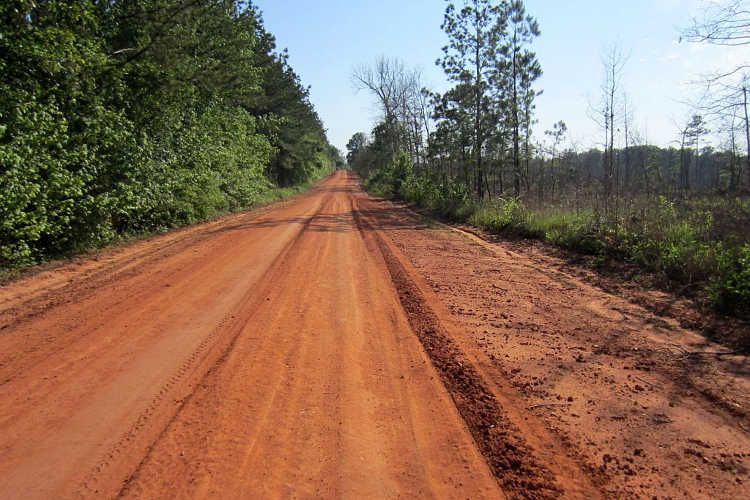
Surprise! It’s not all bad news.
Compaction
Many clay soils are naturally more fertile than other soil types. The natural compaction of the soil tends to slow leaching, which would otherwise wash away many plant nutrients.
Watering
You don’t have to water as often in clay. It retains moisture more readily than other types of soil, and you don’t have to add vermiculite or other water-retention amendments.
Fertilizing
You may not need to fertilize as often. Because the clay particles are so fine and tend to cling together, fertilizer tends to stay in the soil for longer. However, this doesn’t mean you don’t need to fertilize at all! You just may have to do it less often.
Long Term Root Development
Once plant roots have become established, the dense structure of the soil can be a great foundation for many types of plants. The roots will remain securely in place, and may be partially protected from temperature changes.
I’ll bet right now you are feeling a bit better about that garden soil you’ve been cursing!
Don’t Skip This Important Step
No matter how you opt to improve your soil, don’t miss one year of amending your soil once you start. Keep at it to build better quality soil.
It doesn’t take long for the soil to return to its original hard, clumpy state if you don’t keep adding new material to it. Since you went through a lot of effort to amend the soil the first time, maintaining it year after year is easier than starting from scratch!
After many years, you may be able to change the quality of your soil overall, making this less of an annual necessity. But it’s better to go into it knowing that you need to do this simple chore every year for a while. It’s worth the time and effort.
About The Author: Alex writes for Woodtex, a preferred nationwide builder of prefabricated storage sheds, garages, and cabins. He is passionate about sustainability, healthy living, good food and exercise.

